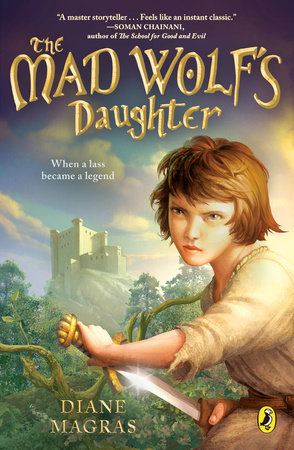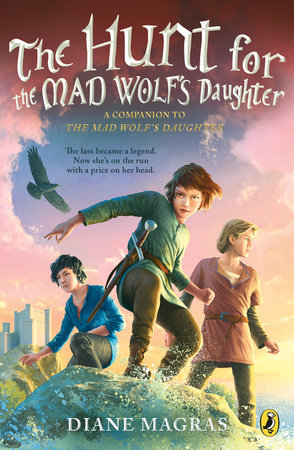Unexpected Paths: Encouraging Middle Grade Readers to Look Beyond the Obvious
by Diane Magras
From our youngest age, we each grow up with an idea of who we are and what we can be, an idea influenced by families, friends, and our society at large. Sometimes these ideas are hopeful, encouraging us to delve deep into our identities and interests, but often they restrict us to stereotypes and limit what we think we can do. Books have the power to depict different paths and model how to find them — and middle grade books have the power to do so at a time when everything seems to be changing in a young person’s life and the “right” path might not seem obvious.
I love to explore the paths that young people can take and depict ways these paths can challenge expectations, especially in The Mad Wolf’s Daughter books. In the second, The Hunt for the Mad Wolf’s Daughter, my young hero Drest’s choice of a path could very well save her life. She’s grown up as a warrior, a member of her father’s legendary war-band, but now has a price on her head, and knights are swarming over the countryside after her. Hiding seems the only option, but a girl warrior is going to stand out in any village — unless she takes on the identity of a traditional maiden and gives up her sword. As Drest imagines it, she could be “a lass with a quiet life in a village. No running. No fear. Just a simple life in a hut.” But without her sword or legend.
For the first time, the expectation of what a girl should be in her world makes Drest question her identity. I’d love for readers to ask themselves: what would I do if I were Drest? And then reflect that question into their own worlds: what’s expected of me? Is that my right path? Are there variations on that path that could make it the right one for me?
In Celia C. Pérez’s The First Rule of Punk, Malú is also struggling with expectations. Like Drest, Malú and her father share interests and an identity (being punk) that challenge what the greater world — including her mother — thinks is acceptable. To her mother, Malú’s role should be one of a proper Mexican-American señorita. To serve that role, Malú must set aside her punk look and interests: her whole identity. In this story, Malú never fully considers trying to be what her mother wants, but she does find a musical piece of her mother’s culture that feels strangely right to slip into her own world. I loved that Malú borrows from different paths to help herself truly be herself. I hope readers will ask how they might do the same with the various paths around them.
It’s harder for Iris in Anne Ursu’s The Lost Girl to find herself when that self has always been tied to her twin, Lark. For the first time, the twins are separated at school, following new paths their parents have decided for them. This shatters Iris’s core identity as her sister’s defender. Suddenly, this strong, smart girl is vulnerable without a purpose. Lark struggles in school but finds happiness in the afterschool art camp she’s sent to, while Iris manages to muddle through her new situation but feels completely displaced in her afterschool program — “Camp Awesome” — and different from the other girls. For Iris, finding herself means delving into herself alone, which isolates her and draws her into a situation where a dangerous magic is in play. Readers should ask themselves when they’ve felt like Iris: their paths unclear, their identities uncertain — and what they would do in Iris’s place.
These books and others are giving young readers the opportunity to think about choice, expectation, and identity in the paths before them. The right path might be a variation from the obvious, or wholly opposite, or a twisting one in between. Books like these show that no path is simple, and we can only find them — and ourselves — if we look deeply enough and have the courage to search beyond the obvious.
-
Books by the Author:
-
The Mad Wolf’s Daughter
Also available from:


